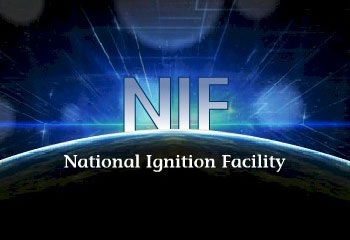Part 2 of 2 Parts (Please read Part 1 first)
The type of nuclear reaction that fuels current commercial nuclear power plants is nuclear fission which is the splitting of heavy atomic nuclei. Nuclear fusion forces atoms of very light elements together to create heavier elements. This produces a huge amount of energy. Decades have been spent looking for a way to create efficient fusion reactions. However, it turns out that creating controlled fusion reaction on Earth is very difficult to control. To date, no fusion experiment has produced more energy than was required to get the reaction going.
While the latest experiment at the NIF still required more energy going in than it got out, it is the first to reach the crucial stage of ‘ignition’, which produced considerably more energy that ever before. This paves the way for ‘break even’ which is where the energy going in is equal to the energy coming out.
In many of the inertial confinement experiments, the fuel pellets contain deuterium and tritium which are heavy isotopes of hydrogen. These nuclei are the easiest to fuse and produce the most energy. The fuel pellets have to be heated and compressed to match the condition at the center of the Sun, which is a natural fusion reactor.
Once these conditions are reached, fusion reactions release several types of particles, including ‘alpha’ particles which interact with the surrounding plasma and increase the heat. The heated plasma then produces more alpha particles and so on, in a self-sustaining reaction. This is referred to as ignition. However, this process has never been achieved before. The results from the NIF experiment on August 8th indicated an energy output of over one mega-joule which marks the threshold agreed upon by the fusion research community for ‘ignition’. It was six times the previous highest energy achieved.
Arthur Turrell is in the Department of Physics at Imperial College. He just published a book titled The Star Builders: Nuclear Fusion and the Race to Power the Planet. He said that "This phenomenal breakthrough brings us tantalizingly close to a demonstration of 'net energy gain' from fusion reactions—just when the planet needs it. The team at the National Ignition Facility, and their partners around the world, deserve every plaudit for overcoming some of the most fearsome scientific and engineering challenges that humanity has ever taken on. The extraordinary energy release achieved will embolden nuclear fusion efforts the world over, lending momentum to a trend that was already well underway.”
Professor Chittenden said that “while the NIF is primarily a physics experiment and does not have the main goal of creating fusion energy, this incredible result means that this dream is closer to being a reality. We have now proven it is possible to reach ignition, giving inspiration to other laboratories and start-ups around the world working on fusion energy production to try to realize the same conditions using a simpler, more robust and above all cheaper method.”
The team at Imperial is now analyzing the data from the NIF experiment. They are using diagnostic methods that they have created in order to comprehend what is happening in such extreme conditions. Dr. Brian Appelbe is a Research Associate at the CIFS at Imperial. He said that “the NIF lasers already created the most extreme conditions on Earth, but the new experiment appears to have doubled the previous temperature achieved. We have entered a regime we've previously never been in—this is uncharted territory in our understanding of plasma.”
Dr. Aidan Crilly is also a Research Associate at the CIFS at Imperial. He added that “reproducing the conditions at the center of the Sun will allow us to study states of matter we've never been able to create in the lab before, including those found in stars and supernovae. We could also gain insights into quantum states of matter and even conditions closer and closer to the beginning of the Big Bang—the hotter we get, the closer we get to the very first state of the Universe.”
